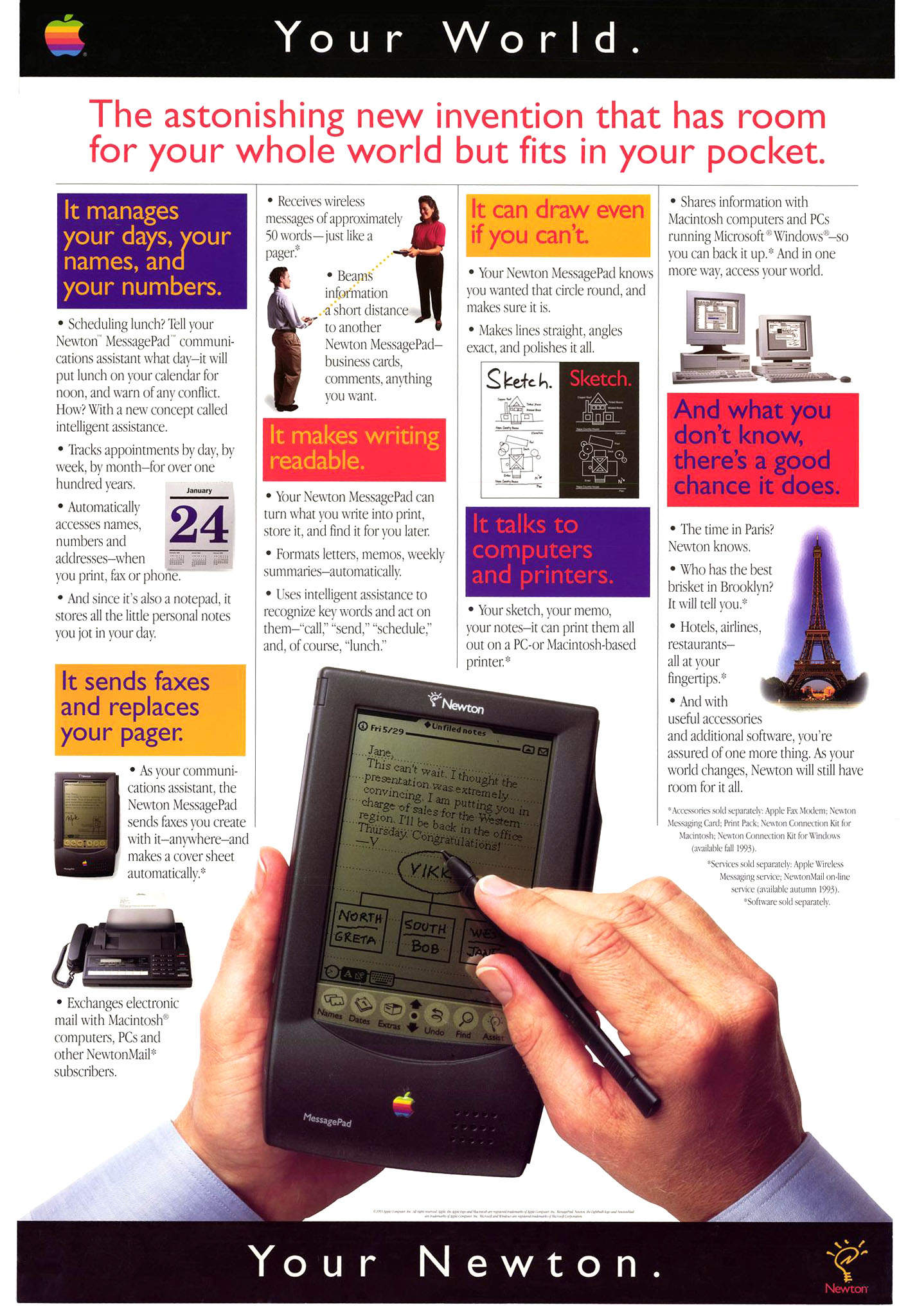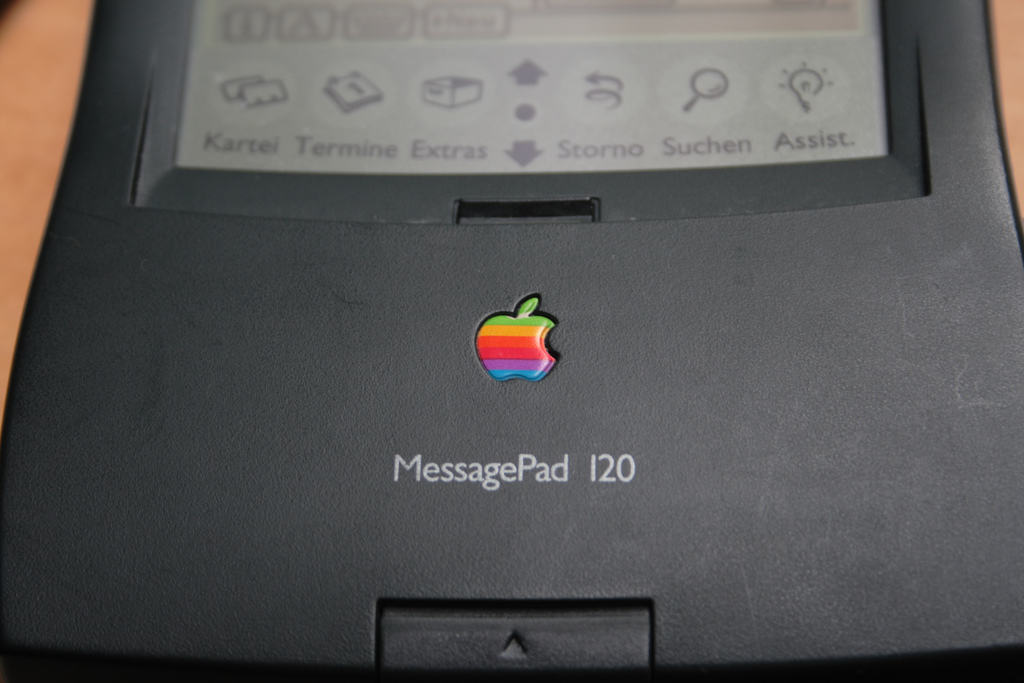 January 30, 1995: Apple Computer launches the Newton MessagePad 120, the first truly great device in an unfairly maligned product line.
January 30, 1995: Apple Computer launches the Newton MessagePad 120, the first truly great device in an unfairly maligned product line.
Coming 18 months after the original Newton MessagePad, the upgraded PDA packs more power — and truly shines once Newton OS 2.0 rolls out.
This post contains affiliate links. Cult of Mac may earn a commission when you use our links to buy items.
Newton MessagePad: Apple’s first tablet
The Newton MessagePad product line proved astonishingly ahead of its time. In fact, the Newton laid the crucial foundation for much of Apple’s later success with mobile devices like the iPod and iPhone. However, it debuted about a decade too early to truly take off.
The PDA let users take notes, make calendar entries, etc. It even featured surprisingly smart artificial intelligence to make use of contextual data. For instance, writing the phrase “Meet Killian Bell for lunch on Wednesday” would create an entry in the MessagePad’s calendar app at the appropriate time.
The device also allowed users to beam data to other Newtons or rival electronic organizers via an infrared transmitter.
John Sculley’s new Apple product line
The Newton was often regarded, both inside and outside Apple, as CEO John Sculley‘s answer to the Mac. The PDA was his first attempt to launch a game-changing new product line.
“It was Sculley’s Macintosh,” Frank O’Mahoney, one of the Apple marketing managers who worked on the Newton, told me when I interviewed him for my book The Apple Revolution. “It was Sculley’s opportunity to do what Steve had done, but in his own category of product.”
By early 1995, Sculley had been gone from Apple for more than a year. However, the Newton MessagePad project continued at a frankly dazzling pace. Cupertino produced so many variations that it’s a bit confusing to make sense of them today.
If you’ve ever found yourself wondering how confused the Apple device lineup was in the mid-1990s, consider this: Despite coming just a year-and-a-half after the first MessagePad shipped in 1993, the Newton MessagePad 120 was already the fourth model Apple made.
Newton MessagePad 120: Code name Gelato

Photo: Apple
Code-named “Gelato,” the MessagePad 120 followed the original Newton MessagePad, the MessagePad 100 and the MessagePad 110. Spec-wise, the device packed a 20-MHz ARM 610 processor and 4MB of upgradable ROM. It came in 1MB and 2MB options.
Design-wise, the MessagePad 120 looked basically identical to its MessagePad 110 predecessor, although it lacked that model’s rubberized surface.
Initially, customers who bought the MessagePad 120 used the same operating system that shipped with Apple’s original PDA. Later, they could upgrade to the vastly superior Newton OS 2.0, which corrected many of the problems associated with the first model.
Newton OS 2.0 adds Rosetta and ParaGraph for better handwriting recognition
These problems included dodgy handwriting recognition. Newton OS 2.0 fixed that with new Rosetta and ParaGraph handwriting software (the first for printed text, the second for cursive).
The upgraded mobile operating system also let users sketch shapes on-screen, which would then be recognized as deformable vector graphics. In other words, scribble a circle on your MessagePad and the device would recognize it as a circle.
In addition, just like iPads and the phablet-size iPhone models that would arrive more than a decade later, Newton OS 2.0 allowed users to choose between landscape and portrait orientations.
It even brought a proto-Siri feature, whereby you could ask questions like, “How do I [do a certain thing]?” (although not via voice recognition). The Newton would then guide you through the necessary steps.
Apple collectors: Is this the Newton MessagePad for you?
As I’ve mentioned multiple times in “Today in Apple history” posts, I’ve got a massive soft spot for Apple during the 1990s. Sure, if I was investing in Apple at the time, I would’ve hated it (unless I had the foresight to hold onto my shares). But it was an era when Apple was taking some massive risks and truly — to use a later phrase — “thinking different.” It was a fun, albeit frustrating, period to be an Apple fan.
The Newton MessagePad epitomized this. The first-gen device was ever-so-slightly crippled, so it never achieved the marketplace momentum it should have. A pre-internet device, it would have benefited immeasurably from connectivity. That is exactly what made the iPhone such a big hit years later.
If you were going to pick up a MessagePad today to see what all the fuss was about, the Newton MessagePad 120 with Newton OS 2.0 is the first model for which I could give an unequivocal recommendation. In this way, the device line really was Sculley’s Macintosh. As with the Mac, it took a few iterations before Apple finally nailed the formula.
In 1995, a Newton MessagePad 120 cost $599, with an extra $109 for the operating system upgrade. Today, you could probably pick one up for a hundred bucks (or even less if you’re lucky).
As a piece of iconic Apple equipment, it’s never going to have the same value as a first-generation iPhone or an original Macintosh 128K. It really should, though.
Do you remember the Newton MessagePad 120? Leave your comments below.


